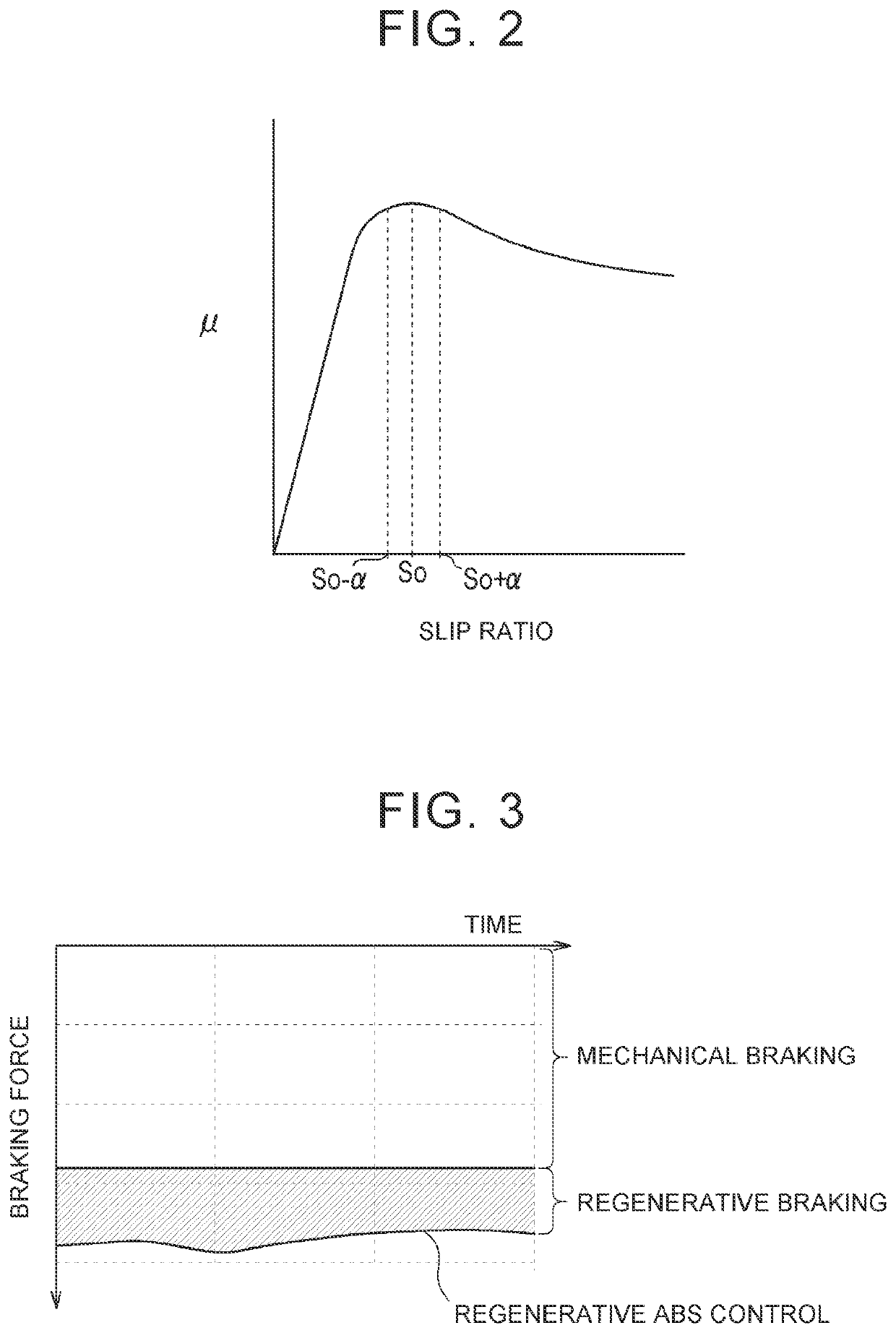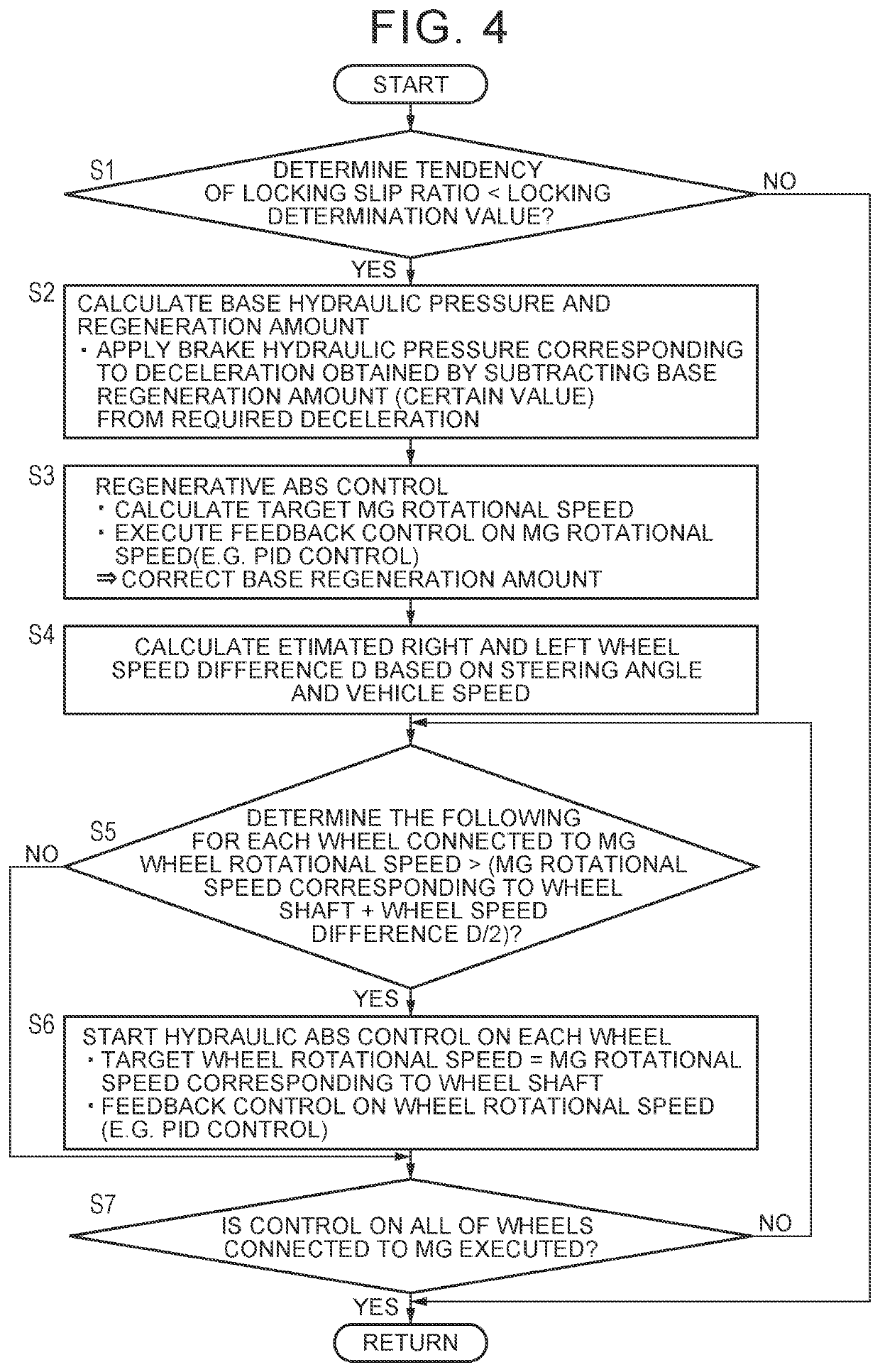Braking control device
a technology of braking control and control device, which is applied in the direction of braking system, vehicle sub-unit features, braking components, etc., can solve the problem of not being able to use a vehicle configured, and achieve the effect of increasing the braking force, reducing or eliminating the tendency of locking, and increasing the rotational speed of the wheel
- Summary
- Abstract
- Description
- Claims
- Application Information
AI Technical Summary
Benefits of technology
Problems solved by technology
Method used
Image
Examples
Embodiment Construction
[0024]A vehicle according to an embodiment of the present disclosure can recover (regenerate) a kinetic energy by converting the kinetic energy into an electric power, etc., and can cause torque when regenerating the energy to act on wheels as a braking force. In particular, in the vehicle, a motor or a motor-generator (hereinafter collectively referred to as a “motor”) is connected to a differential gear (differential mechanism), and right and left wheels are connected to the differential gear. Further, each wheel may be provided with a brake mechanism, such as a friction brake mechanism, that performs braking different from regenerative braking, and may be configured to perform braking of the vehicle using both of regenerative braking and friction braking.
[0025]FIG. 1 schematically shows a vehicle of this type. A vehicle 1 shown in FIG. 1 is an electric vehicle that uses a motor (MG) 2 as a driving force source. The motor 2 is, for example, a permanent magnet type synchronous moto...
PUM
 Login to View More
Login to View More Abstract
Description
Claims
Application Information
 Login to View More
Login to View More - R&D
- Intellectual Property
- Life Sciences
- Materials
- Tech Scout
- Unparalleled Data Quality
- Higher Quality Content
- 60% Fewer Hallucinations
Browse by: Latest US Patents, China's latest patents, Technical Efficacy Thesaurus, Application Domain, Technology Topic, Popular Technical Reports.
© 2025 PatSnap. All rights reserved.Legal|Privacy policy|Modern Slavery Act Transparency Statement|Sitemap|About US| Contact US: help@patsnap.com



